The final chapter in the OG sci-fi/fantasy franchise beloved by millions, Star Wars: Episode VI Return of the Jedi turns 40 this month. Volumes have been written about the first three films in George Lucas’ brilliant exercise in world-building, with Empire widely considered to be the best, and Jedi normally coming in last in fan rankings of the first trilogy. But, with a new theatrical release to celebrate the landmark film’s birthday, let’s dive in to look at what works, and what doesn’t, with the completion of the Luke Skywalker (Mark Hamill) story arc.
Production began on ROTJ on January 11th, 1982 for a principal shoot of 18 weeks. The script, which went through tons of revisions, was written by Lucas and his collaborator on Empire, Lawrence Kasdan. British director Richard Marquand, who had attracted Lucas’ attention with his acclaimed thriller Eye of the Needle, was tapped to direct after names like Steven Spielberg, David Lynch, and (!) David Cronenberg were thrown into the mix as potential hires (Oh! When one imagines what could have been!).
Howard Kazanjian returned as Producer, along with Lucas as Executive Producer, from the previous film as well. The practice of Lucas handing over the reins of his vision to another director, began with Empire, because he was simply too busy, may have worked with Irvin Kirshner at the helm, but with the easily influenced (by virtually all accounts) Marquand, Lucas’s micro-management may have ultimately been one of the things that made ROTJ turn out so…well, weak.
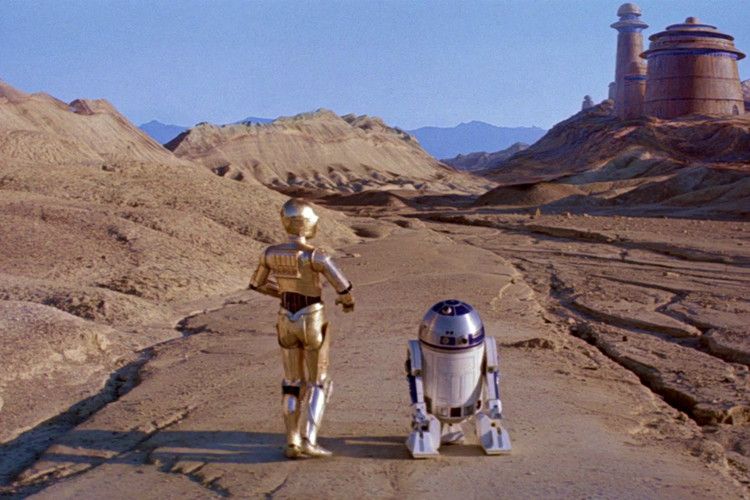
Opening with R2-D2 (Kenny Baker) and C-3PO (Anthony Daniels) literally knocking on the door of Jabba the Hutt’s palace, in a clandestine bid to rescue the frozen in carbonite Han Solo (Harrison Ford, who, riding the wave of his Indiana Jones fame, almost stayed frozen, as Lucas wasn’t convinced he could be lured back). With the help of Chewbacca (Peter Mayhew), Lando Calrissian (Billy Dee Williams), and Princess Leia (Carrie Fisher), our beloved gang of scrappy rebels is reunited with newly minted Jedi Knight, Luke Skywalker to save the day for the galaxy. And that’s just the first act! Except for just a few gripes, the opening really works, Endor is where the problems begin…
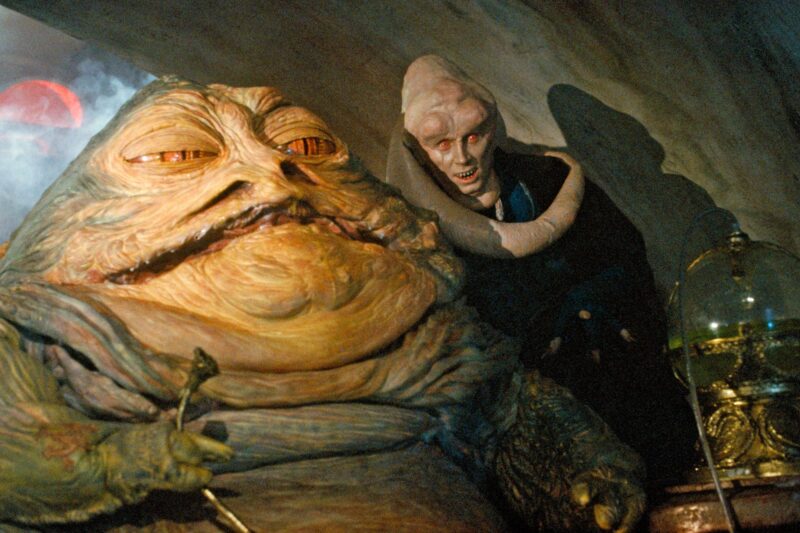
Cuddly primitives helping out with guerilla warfare to destroy a shield generator protecting the (fully operational) Death Star 2, and Luke’s final showdown with Darth Vader (David Prowse-James Earl Jones) follow along in a rushed, but fun, voyage to a somewhat satisfying conclusion. I’m of the “any Star Wars is good Star Wars” faction of fandom, so I adore ROTJ, and never pass up an opportunity for a rewatch, but… there are problems.
Viewed through older, more cynical eyes, ROTJ is a merchandise-driven film (Yogurt warned us–you FOOLS!!). When you learn a lot of what went on behind the scenes, you see this even more clearly. The Ewoks were changed from Wookies in a bid to attract younger viewers. An early idea to kill off Han was abandoned because “dead Han toys don’t sell,” and certain character make-ups were changed at the last minute because their action figures were already in production. And that’s just the shortlist!
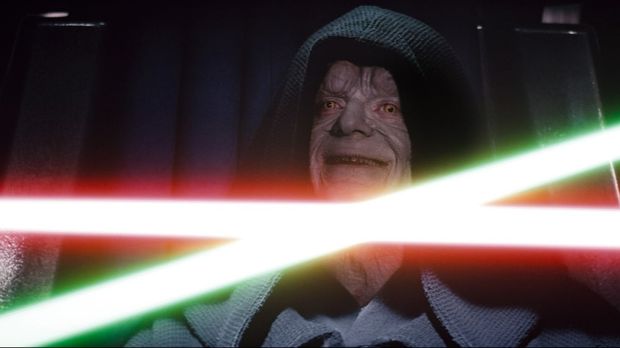
But where Return of the Jedi suffers the most, is in the story itself. The things that fans were so hungry for never paid off. Was Vader really Luke’s father? Yoda limply confirms it like he was asking someone to pick up some milk on their way home from work. Will Luke become a Jedi? Well, even though he confidently introduced himself as a Jedi in the opening sequence, he still needs to return to Dagobah to complete his training, which, apparently, just entails Yoda pretty much saying, “Not until you clip dear old dad,” even though his previous advice was “a Jedi only uses the Force for knowledge and defense.” Who was the other that Yoda referred to? Yoda gasps this out too—“Yeah, Leia is your sister.” This comes off as an extremely lazy way to wrap up a few very important threads in about 45 seconds.
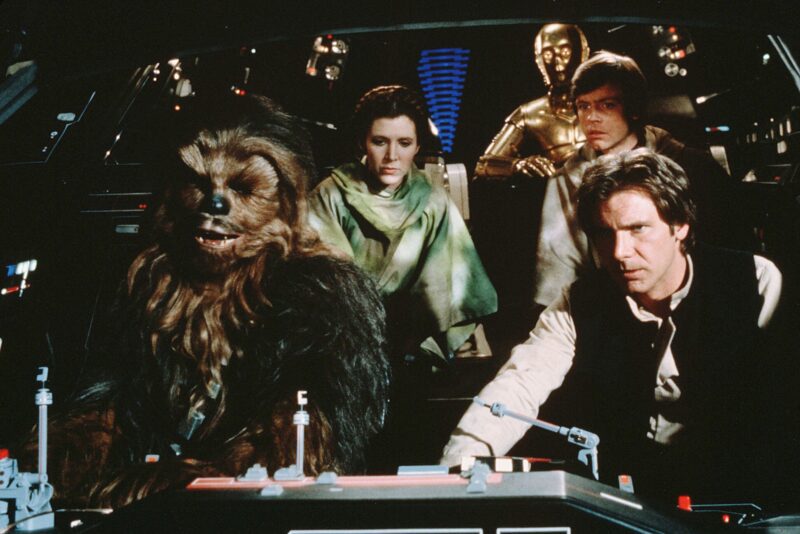
There are “wasted” characters too—fan favorite Boba Fett goes out, not like a G, but thrown into the vagina-dentata Sarlacc (complete with Wilhem scream and a burp) because his jet pack got busted, and the flawed, smirking Han Solo is reduced to an “also-ran” in the Endor acts because it seems like the writers couldn’t come up with anything for him to do. This could be a product of the late revisions made when they finally had confirmation that Ford was on board, but still, a beloved character was wasted. Luke’s character, another strong protagonist who really deserved better, has the completion of his story arc rushed breathlessly into his confrontation with Vader and the Emperor (Ian McDiarmid) when the internal struggle between good and evil could have and should have been fleshed out in a much more mature way (for a kid’s film).
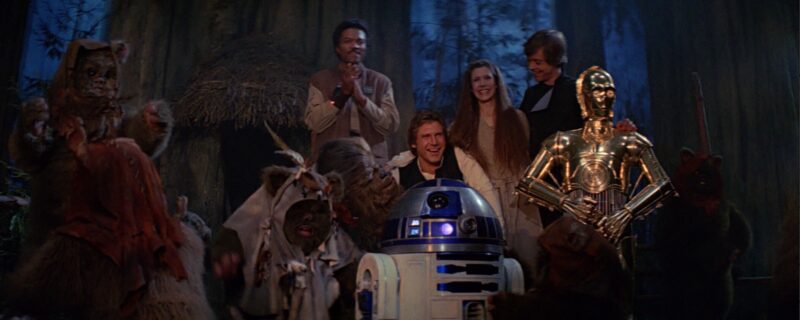
All that being said, Return of the Jedi is definitely a fun film and features a lot of the swashbuckling adventure the franchise is known for, with a much lighter tone than its predecessor. And most Star Wars fans, while recognizing its flaws, still love it, because, after all, it’s Star Wars. It gave us Fisher in her slave girl costume, a slug-like gangster, and everyone’s favorite crustacean, Admiral Akbar (Timothy D. Rose) gurgling his iconic “It’s a trap!.” It also holds the distinction of being the film that most benefitted, and suffered, from Lucas’s “specializing” in 1997—while the blinking Ewoks and the celebration sequences at the end were fitting, did we really need a longer musical number at Jabba’s palace? And why replace Sebastian Shaw’s Anakin with Hayden Christensen in ’04 after everyone saw the younglings murdered?
All this aside, as I said above, I’ll never NOT watch ROTJ, because hey, it’s Star Wars!
If you get the chance, definitely see it on its theatrical re-release!!
 PopHorror Let's Get Scared
PopHorror Let's Get Scared




